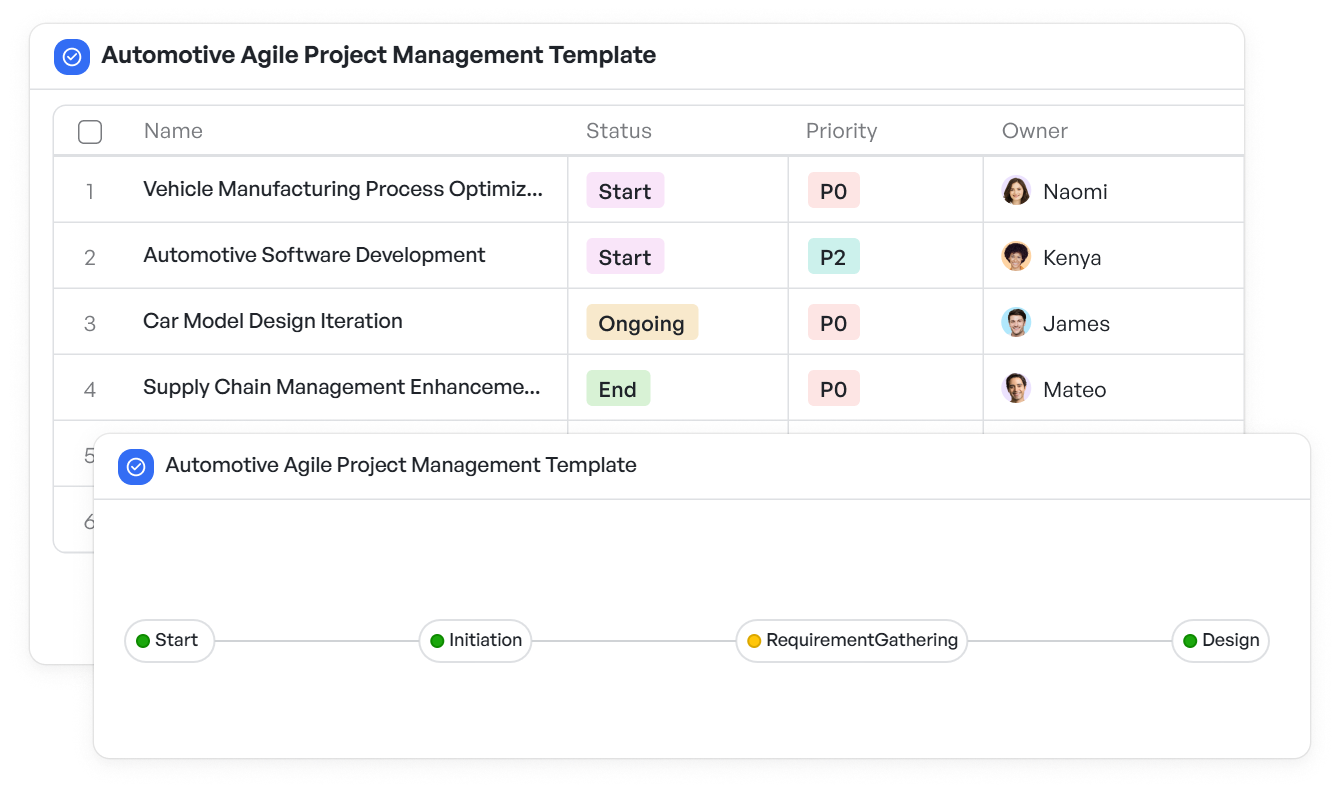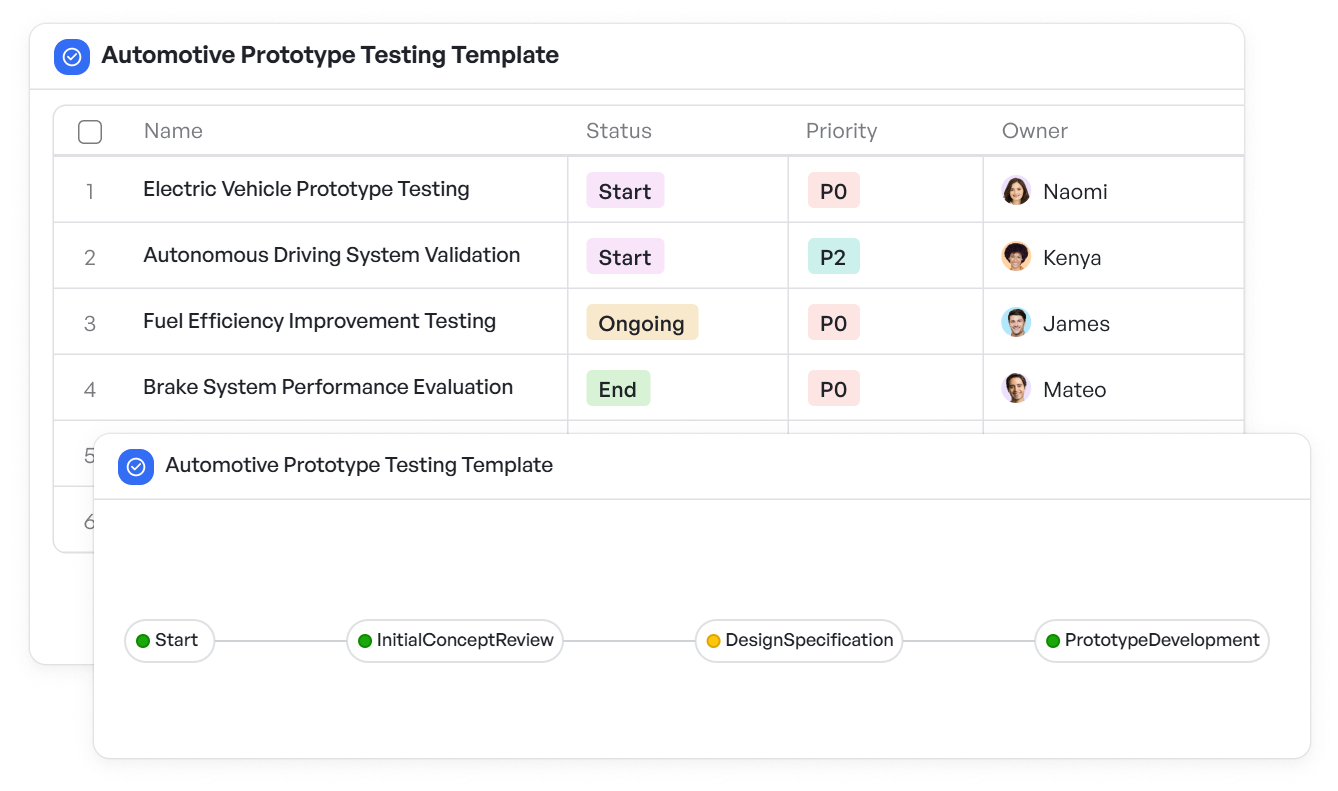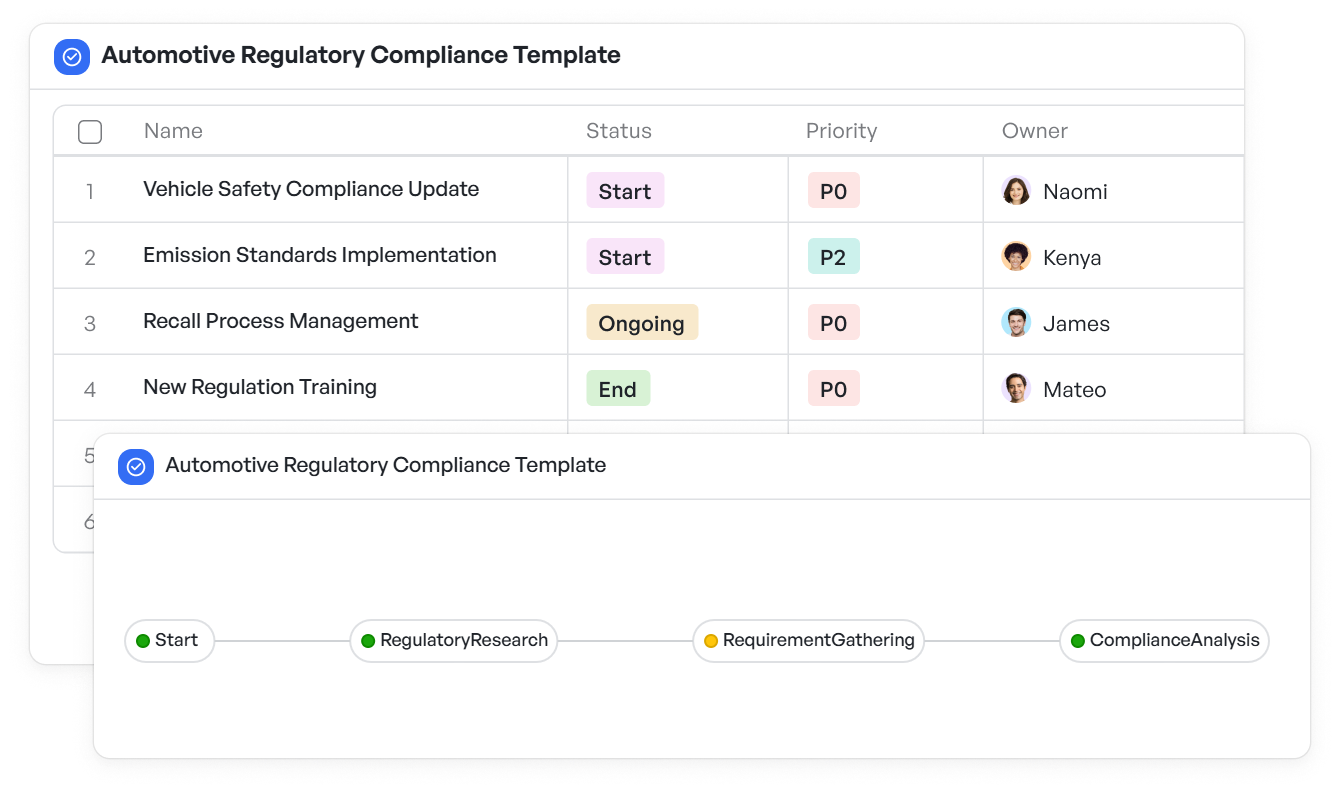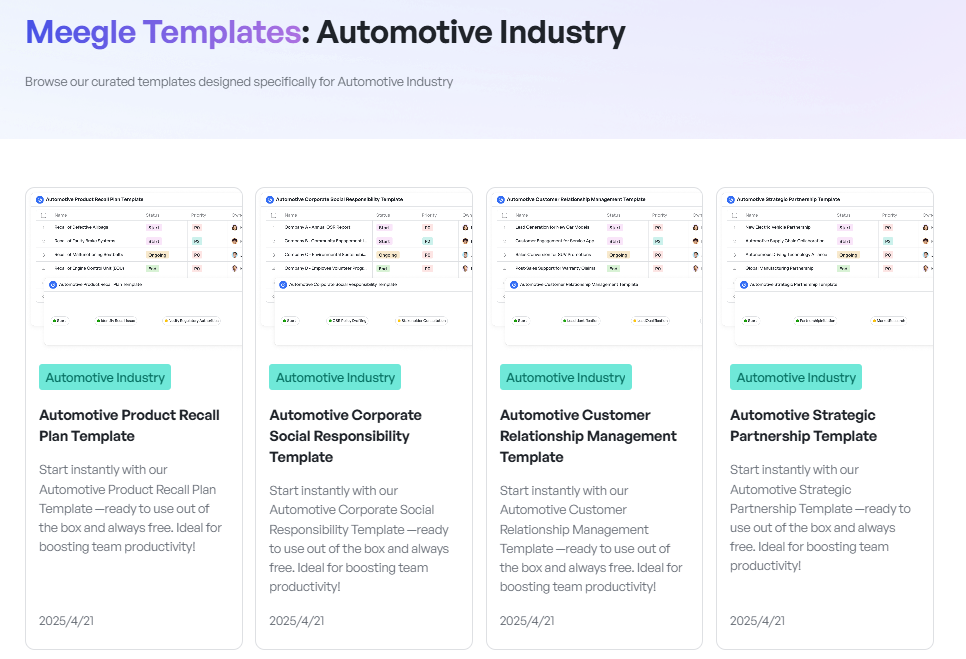How To Implement Agile Modeling In Automotive: Driving Innovation And Efficiency In Automotive Projects

The automotive industry today faces a rapid pace of innovation, with the rise of electric vehicles, autonomous driving, and connected car technologies. Managing development projects in this complex environment demands flexibility, clear communication, and fast adaptation to change.
Agile modeling, a component of the broader Agile methodology offers a methodical way to visualize and adapt vehicle development workflows, enabling automotive teams to deliver quality outcomes faster.
This article explores how mid-market and enterprise automotive companies can apply Agile modeling to streamline project management and align cross-functional teams.
Why Agile Modeling in Automotive Drives Collaboration and Adaptability
Automotive projects often span multiple departments such as research and development (R&D), engineering, manufacturing, quality control and many more. Traditional project approaches can create silos, delay feedback, and complicate change management.
Agile modeling promotes iterative development by breaking workflows into manageable models that evolve with project needs. This approach supports continuous collaboration and allows automotive teams to react promptly to design updates, regulatory changes, or supply chain disruptions.
 Streamline your automotive projects with the agile project management template designed for cross-functional collaboration and iterative workflows
Streamline your automotive projects with the agile project management template designed for cross-functional collaboration and iterative workflowsBenefits of Agile Modeling in Automotive
Automotive companies can gain several advantages from Agile modeling, including:
- Enhanced workflow visualization: Create clear process maps for vehicle design, testing, and production stages.
- Better cross-department coordination: Align engineers, designers, and manufacturing teams on common goals.
- Faster adaptation to change: Update models in real-time as regulations or design specifications evolve.
- Risk reduction: Analyze potential bottlenecks and quality issues early through iterative reviews.
- Improved Compliance Tracking: Visualize certification steps and safety checks integrated into project flows.
5 Key Steps to Implement Agile Modeling in Automotive Projects
Automotive teams can begin applying Agile modeling by following these key steps:
1. Capture Current Development Processes
Automotive teams should map existing workflows such as prototype design, component testing, and production validation using visual templates like the automotive prototype testing template to ensure clarity and consistency across departments.
 Streamline prototype validation workflows to ensure consistent and thorough component testing
Streamline prototype validation workflows to ensure consistent and thorough component testing2. Define Modular Project Features
Segment vehicle development into features like software integration, battery system design, or safety testing to break down complex projects into manageable, focused parts.
3. Establish Iterative Model Reviews
Set regular cycles for team feedback to keep workflows aligned with evolving project demands, leveraging tools such as the automotive agile project management template to facilitate smooth iterative reviews.
 Facilitate iterative project reviews and adaptive planning across automotive development teams
Facilitate iterative project reviews and adaptive planning across automotive development teams4. Incorporate Regulatory Milestones
Add checkpoints for compliance with automotive safety standards and certifications by integrating frameworks like the automotive regulatory compliance template directly into your process models.
 Embed regulatory checkpoints into workflows for smooth adherence to automotive safety standards
Embed regulatory checkpoints into workflows for smooth adherence to automotive safety standards5. Use Collaborative Platforms for Transparency
Provide real-time access to models so all team members can track progress, responsibilities, and deadlines, fostering transparency and collaboration across cross-functional teams.
Suggested Read:👉The Best Online Collaboration Software for 2025
Automotive-Specific Visual Workflow Templates
To aid Agile modeling, automotive teams can utilize templates like:
- Automotive Product Development Template: Streamline the entire product development lifecycle from concept to final delivery
- Automotive Prototype Testing Template: Ensure systematic testing and validation of vehicle prototypes for quality and performance
- Automotive Quality Assurance Checklist Template: Maintain high standards of quality by using a comprehensive checklist to guide all testing phases
- Automotive Supply Chain Optimization Template: Optimize supply chain processes to improve efficiency, reduce delays, and ensure timely production.
These templates help standardize complex processes while allowing room for adjustment.
 Templates available for the automotive industry by Meegle
Templates available for the automotive industry by MeegleAccelerate Automotive Innovation and Collaboration
Agile modeling equips automotive companies to meet innovation demands with greater speed and accuracy. By visualizing workflows and fostering continuous feedback, teams can reduce errors, manage compliance more effectively, and improve collaboration across functions.
For mid-market and enterprise automotive firms, this method balances complexity and adaptability, ensuring projects progress efficiently without losing oversight.
Fuel your automotive projects with workflows that adapt as fast as you move—try Meegle today.
The world’s #1 visualized project management tool
Powered by the next gen visual workflow engineRead More
Check All BlogsStart creating impactful work today



